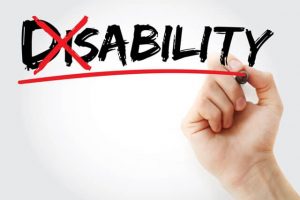Accessibility has been a hot topic for many years and as time goes by, we see increased awareness. With this awareness come improved measures to make life easier for those living with various disabilities. While 2018 has brought about some changes, it’s important to note that there were already a number of laws in place.
Some of these existing laws include:
- The section of the Canadian constitution regarding the Canadian Charter of Rights and Freedoms. This section guarantees equal protection under the law and bans discrimination – especially against groups such as those with a mental or physical disability.
- The Canadian Human Rights Act prohibits harassment or discrimination based on any of the 11 stipulated grounds. Disability is one of these grounds. Those who are employed or served by the First Nations or federal governments are protected under this law. Businesses in the private sector that are also federally regulated (like broadcasters and banks) are also covered. For example, such companies may not distribute any mobile app that can be used only by those without disabilities. It needs to cater to all users.
 The Employment Equity Act helps ensure that those with disabilities are not discriminated against based on their disability. Those with disabilities are to participate equally in the workforce and employers also need to accommodate such employees in order to facilitate job function. In other words, technology needs to be in place and accessible to allow a disabled person to perform their job.
The Employment Equity Act helps ensure that those with disabilities are not discriminated against based on their disability. Those with disabilities are to participate equally in the workforce and employers also need to accommodate such employees in order to facilitate job function. In other words, technology needs to be in place and accessible to allow a disabled person to perform their job.- In Quebec, the Respecting Equal Access to Employment in Public Bodies Act is in place to prevent the public sector from discriminating against disabled persons. Examples include schools, public transit, and healthcare providers.
- Each Canadian province also has its own provincial human rights legislation. These laws are in place to help prevent discrimination in such places where goods and services are provided, employment, and housing. Just like the other laws mentioned above, this law applies to various forms of discrimination, including disability-based discrimination.
With all of these in place, some people might wonder where there could possibly be room for improvement. However, we live in a world of change which means that our laws need to change too. Here are some of the new and upcoming accessibility laws:
- The latest accessibility act is set to take things to the next level. During the consultation process, people with disabilities, as well as advocates and organizations, were consulted in order to identify problems and help create solutions as well as set goals for the future. The main revelation of this consultation process was the fact that provisions need to be made in order to allow disabled Canadians participate in society at an equal level. This does not only apply to physical aspects of life but also digital content, standards of communication, information standards, and so on. Web Content Accessibility was a hot topic and new guidelines have already been accepted and are being implemented.
- According to the Accessibility for Ontarians with Disabilities Acts, which became a law in 2005, certain set accessibility standards are to be followed when (in private and public sectors) dealing with the public. Such standards include information and communication, transportation, customer service, employment, and the design of public spaces.
- The Accessibility for Manitobans Act was passed in 2013 and it is similar to the law in Ontario. The focus is on five main standards in private and public sectors to ensure accessibility for all.
- The Nova Scotia Accessibility Act recently passed and it is set to develop five main accessibility standards, including communication and information. This act details specific technological barriers and, with the new legislation, the provincial government will be launching a program to help small businesses remove these barriers.
 Canada is seeing some amazing change and the next on the list is bound to be British Columbia.
Canada is seeing some amazing change and the next on the list is bound to be British Columbia.
The pressure is also on Saskatchewan and Yukon to follow the example of the leading provinces.
With the amazing success of the other provinces, it’s only a matter of time before all provinces adopt similar accessibility legislation. Again, it’s important to remember that accessibility is so much more than just elevators and wheelchair ramps. It’s also about making information and communication easy for all. Websites need to fulfill the set standards with regards to how they share information and communicate this information to the user. Some users suffer from hearing loss, vision loss, and other disabilities that make it difficult to read or comprehend the content of the website. If you own a business, make sure that you are adhering to these standards and your website is consistent with the current legislation.
At Tax Benefits Canada, we specialize in assisting with all of your disability tax credit needs. Feel free to contact our expert team at +1 (855) 413-6971 for more information and personal assistance.







